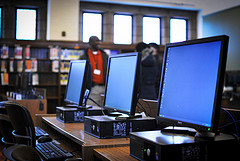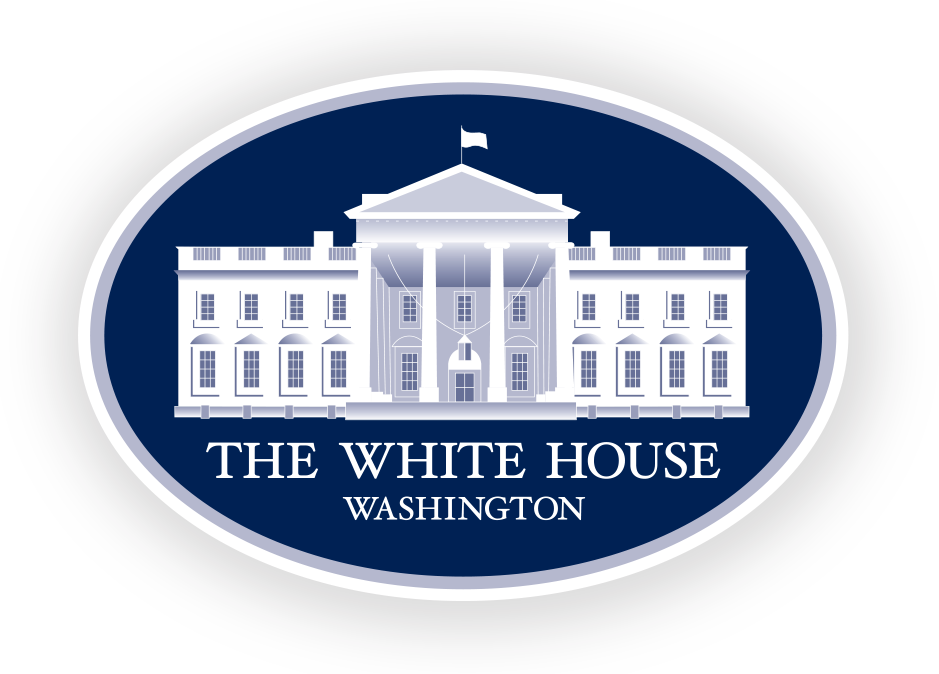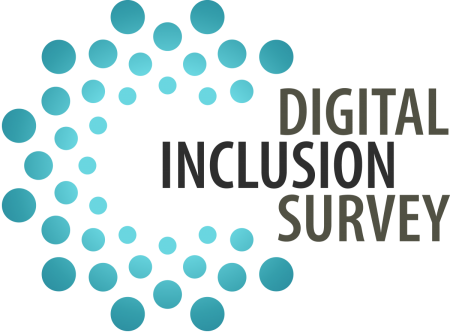
Fast, affordable Internet access for all.

Last we checked in with Steamboat Springs they had just finished a connectivity project. Now the community is taking another step to improve local connectivity in this northwest Colorado ski resort town.
The goal is to connect large community anchor institutions throughout town with a fiber backbone which could become the basis for a larger network. Several community anchor institutions have pooled their resources and pledged $748,000 while also securing a matching grant to install 9 miles of fiber across the small town of 12,000. Funding is in place, but the agreement between the institutions must be finalized before sending out an official request for proposals to find a company to install the fiber.
Matching Grants & Community Connectivity
The Colorado Department of Local Affairs (DOLA) intends to match the community’s contributions towards the project. DOLA will provide $748,000 in grant money for the fiber backbone. According to Routt County Manager Tom Sullivan in Steamboat Today, the fiber design will have splice points to allow private providers to provide last-mile connectivity to residents’ homes and businesses from the fiber backbone.
So far, the large institutions pitching in for the 9 miles of fiber are: Routt County’s public safety complex, Yampa Valley Electric Association, the city of Steamboat Springs Mountain Fire Station, Yampa Valley Medical Center, Colorado Mountain College, and the Steamboat Springs School District. Several of these institutions had previously collaborated with the Northwest Colorado Broadband group and the Steamboat Springs Chamber Resort Association on the community's first connectivity project.
The Carrier Neutral Location
Plans for a fiber network collaboration between the city, school district, and county will save hundreds of thousands of dollars in Stormlake, Iowa. The school district recently voted to take advantage of significant savings for connectivity by switching to the publicly owned infrastrucutre as soon as the network is ready.
The Storm Lake Pilot recently reported that under the current contract with Vast Broadband, the district pays $7,500 per month to lease two strands of fiber. The new arrangement will allow the district to lease 12 fibers from the city-owned network for $14,000 per year or $1,167 per month - a reduction of approximately 85 percent. The city and the school district will enter into a 10-year agreement to ultimately save the district a total of $760,000 or approximately $6,333 per month during the term of the lease.
The school will still need to pay for Internet access and as part of the agreement will be responsible for purchasing its own equipment. The School Board voted unanimously to approve the agreement.
As we reported in July, the Stormlake project began as a way to better communication between water and wastewater utility facilities but then evolved into a public safety and cost saving initiative. All three entities - Storm Lake Community School District, the City of Storm Lake, and Buena Vista County - anticipate considerable savings and heightened reliability. We expect to report on more public savings as the community uses this valuable fiber asset.
Project costs for the system of conduit and fiber, which does not include hardware, are estimated at approximately $1,374,000 to be shared by all three entities. This first phase of the project is scheduled to be completed by December.
On July 6th and 7th, much of Steamboat Springs, Colorado, lost phone and Internet when a fiber line was cut, creating a public safety hazard. In order to aviod future massive outages and improve connectivity, Steamboat Springs has decided to develop a Carrier Neutral Location or CNL, much like a similar initiative in nearby Cortez.
In July a CenturyLink fiber optic line was accidentally cut by construction crews, disrupting the 911 emergency system for about 3 hours. No calls were missed, but it is a terrifying reminder of how small towns are dependent on incumbent providers like CenturyLink for basic services.
The community, located in the northwest corner of the state and home to about 12,000 people, is known as a popular ski destination in the winter months. Locations like Steamboat Springs have a natural beauty in the rugged terrain, but incumbent providers tend to see a poor return-on-investment rather than beauty.
The July incident was not the first. In October 2011, an 8-hour outage caused a potential $1 million loss to the economy. If the outage had taken place during peak tourist season, the estimated cost would have been $1 million per hour. In order to ensure their public safety and ability to attract economic development, leaders in Steamboat Springs have decided to end the possibility of massive outage caused by a single cut by investing in a place where multiple carriers can connect.
A CNL is a space owned and maintained by a neutral party where broadband providers can connect to each other to provide redundancy. Sometimes referred to as "meet-me rooms," CNLs are especially useful for middle- and last-mile providers to connect. The facility drives down the cost of bandwidth for community anchor institutions and service providers because they do not require a separate facility for connections and fees are typically reasonable. The CNL in Steamboat Springs went online on June 1st, 2014.

Community Anchor Institutions, such as public libraries and schools, are among the first places people go to access the Internet when they cannot access it at home. With 30% of the United States without a broadband connection at home, libraries and schools are essential for access to social services, job applications, and digital learning tools. These institutions, however, may not themselves have the capacity to meet the increasing demand for Internet access.
That can be a really big problem. With many states requiring online testing, schools need to have adequate bandwidth, so that networks do not crash at key moments. Some schools have to ration Internet access - while some students are testing, no one else is allowed to use the Internet. This means no video-streaming educational videos or remote learning classes while testing takes place. Educational opportunities shrink as students and teachers have to forego the most up-to-date online resources because of this bandwidth shortage.
The major barriers to high quality Internet access for community anchor institutions are cost and availability. National carriers like AT&T often do not provide the needed capacity at affordable rates. Municipal networks, however, are locally controlled and attuned to local needs. They treat community anchor institutions like a fundamental building block of society, not a profit center to be exploited.
72.2% of libraries help patrons access employment databases, and 58.8% of libraries face budget constraints when increasing their bandwidth.
63% of schools do not meet the ConnectED Current Goals for high speed connectivity which impacts nearly 40 million students in grades K-12.
-- Education SuperHighway’s Connecting America’s Students: Opportunities for Action
The federal E-rate program provides more than $2 billion in funding each year to support Internet access at public schools and libraries. The E-rate program, however, does not go far enough in helping these entities achieve high-capacity, reliable, and affordable Internet access. In too many cases, E-rate simply helps schools and libraries to afford connections priced at exorbitant levels from national carriers. Below, we detail the many benefits of local governments connecting their own community anchor institutions with self-provisioned networks - often called “institutional networks” or "I-Nets".
Learn more
Keep up to date with all things community broadband by subscribing to a once-per-week email with stories about community broadband networks.
Internet access is already crucial for community anchor institutions and will only become more important as society continues to incorporate technological advances into every aspect of life. Self-provisioning often results in higher capacity connections that are more reliable, and most importantly for local budgets, much more predictable in terms of future costs. Operating an institutional network, communities can plan years in advance for upgrades and have greater security in long term budgeting rather than worrying about the incumbent provider raising rates.
For example, Martin County in Florida had been leasing lines from Comcast to connect the schools and public buildings, but its 10-year franchise agreement was about to expire. With Comcast demanding a stunning price increase, Martin County instead built an underground fiber network with much more redundancy than Comcast offered. Compared to leasing lines, Martin County expects to save an estimated $30 million over the next twenty years. Now Martin County does not fear rate hikes or unexpected outages from Comcast’s network.
In talking with some schools that have transitioned from leased lines to operating their own network, some have reported that network management requires less staff time because the modern technology behind a wide-area network largely runs itself. If something goes wrong, staff have the information they need to diagnose and repair rather than having to wait on hold for a CenturyLink call center to begin investigating a problem.
This chart of five different school districts across the U.S shows some of the savings schools have experienced with municipal networks. The orange is the original provider’s exorbitant price for each Mbps per month. The blue is the price from the municipal network. The savings are stunning.

Sources for the graph
MuniNetworks Public Savings Fact Sheet and Breaking the Broadband Monopoly
For more information about costs and savings, dig into these examples of savings to community anchor institutions:
Ammon, Idaho: municipal network lowers prices, increases capacity for schools after State Education Network dispute with CenturyLink disrupts service.
Ottawa, Kansas: the schools save $3,000 a month and get double the bandwidth.
Staunton, Virginia: the schools used to pay $2,000 a month just to lease fiber, but now they’re connected for free.
Increased Capacity, Expanded Services
Libraries and schools have used the increased Internet capacity of some municipal networks to expand services and enhance their educational materials. Rural districts can use remote instruction via video-streaming to offer more foreign language and science classes. Communities have crafted innovative programs for students to explore how high-speed Internet access can be used in the classroom for more individualized and self-paced learning. These educational experiences cannot be achieved without high-capacity Internet access.

Southwest Georgia: some schools are leveraging the better Internet access to bring STEM education, such as live interactive science demonstrations, to students in rural classrooms.
Chattanooga, Tennessee: the public library has dedicated an entire floor as a maker space, encouraging entrepreneurship and the latest technological innovations.

Expansion Beyond Institutional Networks
One of the many benefits of institutional networks is that communities can use the assets and knowledge from building those connections for economic development and other policy goals. For instance, when building the fiber to connect schools and libraries, smart communities install extra fiber that can be used to connect local businesses or form the backbone of a citywide network in the future if that becomes feasible. Many local governments have found that after building a high-speed institutional network, local businesses clamor for access as well.
Santa Monica is a great example of a community that started by self-provisioning community anchor institutions and has gone on to create many benefits for businesses and residents with both the savings and assets from the municipal network.
Without incurring any debt, the city built an expansive fiber network. They started by connecting municipal buildings and community anchor institutions with a $530,000 investment. Then, they expanded the network through grants for intelligent traffic systems and the savings from discontinuing expensive leased lines.
The city saved $400,000 the first year and $700,000 each subsequent year. With the extra fiber, Santa Monica provides better Internet access to local businesses and leases fiber to other service providers. The money from the municipal network is reinvested in the community, encouraging economic development. See our case study for more details.
To learn more about the benefits of community networks providing Internet access to libraries and schools, check out our multimedia resources.
Community Broadband Bits Podcasts
These podcasts aim to be around 20 minutes long and feature issues related to libraries and schools.
| Episode | Title | Synopsis | Guests | Transcript |
| 79 | Don Means on Libraries and White Spaces | Explanation on TV white spaces wireless technology | Don Means | Transcript 79 |
| 71 | Education SuperHighway Wants Better Broadband for Schools | Education SuperHighway's approach to ensure better Internet connection to all schools and the role of community to achieve this goal | Evan Marwell | Transcript 71 |
| 46 | North Georgia School Brings Gig To Schools, Jobs to Region | The origin of the North Georgia Network and its economic and social impact on the region | Paul Belk | Transcript 46 |
| 43 | Carroll County Explains Many Benefits of County Owned Fiber | How Carroll County Public Network started and the benefit its community network provides | Gary Davis | Transcript 43 |
| 39 | Moultrie City Manager Discusses Origins of CNS Network in Georgia | The origin of CNS network in Georgia and the benefits of the network for local schools and community savings | Mike Scott | Transcript 39 |
Conferences, presentations, hearings, and other research
Looking for even more information about libraries, schools, and Internet access? Here are archives of conferences, presentations, hearings, and other research.

Community-Based Broadband Solutions Report PDF January 2015 The Executive Office of the President
The White House report features the savings to schools and libraries provided by locally controlled community networks.

Connecting America’s Students: Opportunities for Action Report PDF April 2014 Education SuperHighway
This report examines E-rate spending and underscores the importance of Internet access in schools. The report attempts to answer why the connectivity gap persists and provide solutions to increase Internet access.

2013 Digital Inclusion Survey of Libraries digitalinclusion.umd.edu From the University of Maryland Funded by the Institute of Museum and Library Services
Each year, the University of Maryland releases a survey of digital information services that libraries across the U.S. offer. The reports highlight inequities in Internet access and the changing role of libraries.

Connected Communities in an Age of Digital Learning: a Vision for a 21st Century E-rate Program Video Archive February 27, 2014 New America Foundation
This webcast concerned the modernization of the E-rate program and increasing Internet access at libraries and schools. Featured speakers included representatives from the Institute of Museum and Library Services, the U.S. Department of Education, New America’s Open Technology Institute, the Albemarle County (VA) Public Schools, and the Richland Library (SC).

Schools, Health & Libraries Broadband (SHLB) Coalition www.shlb.org
The SHLB is a nonprofit organization formed in 2009 to support affordable, high-capacity broadband at anchor institutions. They develop and promote policies and programs that further connectivity in communities.

National Association of Telecommunications Officers and Advisors (NATOA) www.natoa.org
A professional association of telecommunications officers and advisors that deal with communication policies and programs in local governments.
Photo of library computers courtesy of the Knight Foundation
Photo of library headquarters from the public domain
Sheboygan County, the City of Sheboygan, and the Sheboygan Area School District (SASD) plan to collaborate to deploy a fiber network. According to an article in the Sheboygan Press, all three entities seek cost savings and higher capacity connections.
Approximately, 49,000 people live in the City of Sheboygan; there are 10,000 students attending SASD. Over 115,000 people live in the County located on the western shore of Lake Michigan.
The County, the City, and SASD will split the cost of constructing the ring, approximately $1.4 million. Each entity will then pay for laterals to connect its facilities to the ring. The total to construct the ring and connect each entities' facilities will be approximately $3.58 million.
To build its laterals, SASD will pay $865,000. The District will save approximately $220,000 per year on connectivity fees, paying back the total investment ($1.4 million + $865,000) in about 10 years even without putting any value on the considerable benefit of much high capacity connections. When factoring in the reality that their connectivity fees would undoubtedly increase signficantly under the status quo arrangement and the much higher capacity connections, the payback period will be even shorter than 10 years.
The district is already providing a device for each student and its current connection is struggling to meet the demand. The state has a program, TEACH Wisconsin, which subsidizes the high cost of leasing connections from existing providers but given the high rates often charged by a company like AT&T, it can only go so far.

Austin, Texas, with a little over 820,000 people, is home to several centers of higher ed, the Southwest Music Festival, and a next generation network known as the Greater Austin Area Telecommunications Network (GAATN).
It was also the second metro area selected by Google for the Google Fiber deployment. But before they got Google Fiber, a local partnership had already connected key community anchor institutions with limitless bandwidth over fiber networks. The network measures its success in terms of cost avoidance, and averages out to a savings of about $18 million per year combined for its 7 member entities.
In 2011, the National Association of Telecommunications Officers and Advisors (NATOA) named GAATN the Community Broadband Organization of the Year. Today, GAATN also serves the City of Austin, the Austin Indepedent School District (AISD), Travis County, local State of Texas facilities, Austin Community College (ACC), the University of Texas at Austin (UT), and the Lower Colorado River Authority (LCRA).
GAATN's bylaws prevent it from providing service to businesses or individual consumers. Texas, like 18 other states, maintains significant barriers that limit local public authority to build networks beyond simply connecting themselves. As a result, local entities must tread lightly even if they simply want to provide service for basic government functions.
California's Watsonville, population 51,200, joins the ranks of municipalities considering the benefits of a publicly owned fiber optic network to connect key facilities. At a September 10 the City Council passed a resolution approving plans and calling for an RFP for a next generation fiber network. Bids will be accepted until October 8, 2013.
According to a Register Pajaronian article, the City Council expects the network to cost $480,000. An August 27 memorandum [PDF] provides more detail on the project.
Charter Communications currently provides fiber optic I-Net service to Watsonville local government. The network provides data connections, Internet, gate controls, and security systems throughout the City. The fiber I-Net also provides backhaul for wireless systems for the police department and various remote city locations.
As has happened many in states that have revoked local franchise authority, Watsonville's favorable long term cable franchise agreement with Charter is ending. Charter will no longer provide the I-Net services for no cost as part of its agreement to place its equipment in the public rights-of-way. Instead, it has proposed expensive lease options.
Charter has offered two quotes: $43,115 per year for a reduced level of service and $149,153 per year for the same level of service the city now receives. The memorandum goes on to note that a reduced level of service would require reduction of some uses for the current network, such as eliminating a number of security cameras.
City staff estimates that installation of a next generation network would cost approximately $480,000. They would connect the high school, the City Information Technology office, the Veterans Building, the local reservoir, the library, the airport and the fire station. Watsonville has a significant amount of fiber already in place for use in the citywide transportation system which will reduce the cost of installation. The project will be financed primarily with library and water enterprise funds and other city departments that connect will contribute to the project costs.